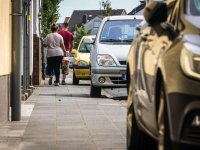Does anyone do this in the US? In Japan, when another driver let's you cut into his lane in crowded conditions, drivers briefly switch on their hazard lights to indicate thanks.
I had assumed this was a Japan only thing, but this past week my son visited us from San Francisco and while driving my car on the highway here in Oregon, switched in the hazard lights briefly when he cut in front of someone.
Surprised, I asked him if people did this in the US. He said he thought so, but on the other hand while he's lived in the US for the past ten years, since university, he was raised mostly in Japan.
Are hazard lights (AKA emergency blinkers/flashers) used this way to thank courteous drivers in the US?
I had assumed this was a Japan only thing, but this past week my son visited us from San Francisco and while driving my car on the highway here in Oregon, switched in the hazard lights briefly when he cut in front of someone.
Surprised, I asked him if people did this in the US. He said he thought so, but on the other hand while he's lived in the US for the past ten years, since university, he was raised mostly in Japan.
Are hazard lights (AKA emergency blinkers/flashers) used this way to thank courteous drivers in the US?

